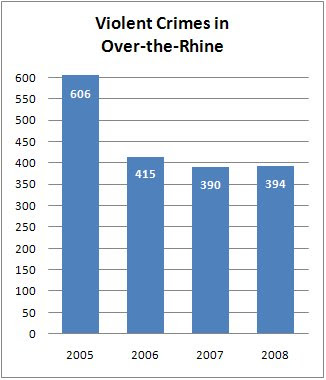If Cincinnati is our home, then downtown is akin to our city’s kitchen. Downtown is where we, as a community, watch television (Fountain Square), downtown is where we eat, and downtown is where we complete our financial transactions. This is the analogy Mayor Mark Mallory used at the 2010 State of Downtown meeting held this past Thursday, April 29th.
Mayor Mallory also likened downtown to an engine that is “hot and running well” at the Annual Member Meeting hosted by Downtown Cincinnati Inc. (DCI). The positive 2009 report identified several positive indicators during one of the most difficult economic years the nation has seen including:
- $116 million in completed construction and renovation project with another $1.6 billion in projects currently in progress
- More than 445,000 square feet of office expansions, renewals and relocations in 2009
- 30 new retail/restaurant/entertainment establishments opened in the central business district
- 140 single family homes were sold, keeping population growth consistent with projections
- $59 million economic impact of total room nights marked a record setting year for hotels
- The Main Library, Cincinnati Museum Center, Krohn Conservatory and Fountain Square all posted record attendance years
- Overall crime rate for the central business district/riverfront was down double digits in Part 1 and Part 2 offenses over the past decade, helping make Cincinnati the 7th safest city for pedestrians out of the nation’s 52 largest metro areas
- DCI’s 3rd annual pedestrian count study showed a continued increase during peak weekday times (11am to 2pm), and a total increase of 20% in pedestrians during the evening hours
- A partnership with the Hamilton County Department of Pretrial Services and the County Jail, University Hospital, Summit Behavioral Healthcare and others to identified the top 16 high risk panhandlers; placing 3 of the 16 cases in permanent housing to date
The meeting, which lasted for just a little over an hour, also included remarks from the Senior Regional Officer of the Cincinnati/Cleveland Branches of the Federal Reserve Bank Dr. LaVaughn Henry, Hamilton County Commissioner Greg Hartmann, Cincinnati City Manager Milton Dohoney, and DCI president David Ginsburg.
The speakers focused on the importance of economic development in the greater downtown areas, each bringing a different viewpoint to the podium. Commissioner Hartmann spoke briefly about the importance of downtown to all of Hamilton County and the region, while using the casino development as a prime example of how to get the public excited and involved in the development process. Dr. LaVaughn Henry addressed the national economic recession and stated that while unemployment is still high here in Cincinnati and across the country, the rate of job loss is slowing and consumer confidence is on the rise.
City Manager Milton Dohoney stressed the importance of taking risks, while also being cautious in our approach. His remarks on economic development revolved around the creation of new jobs, smarter land use, and partnership and investment in our community.
“Big steps equal big gains,” Dohoney commented in regards to taking risks. “We must work on expanding our tax base, while also proving that we are an inclusive community.”
Following the meeting, UrbanCincy caught up with DCI President David Ginsburg where he discussed the importance of projects like The Banks and the Broadway Commons Casino ultimately not becoming a single destination. Ginsburg also brought up the importance of “zoning flexibility” when it comes to downtown vacancy issues.
“Our primary role is to enhance downtown’s potential as a vibrant, clean and communal place that attracts employers, art, music and the creative class,” Ginsburg stated. “We must continue to improve downtown’s perception by getting more people downtown to witness the improvements firsthand. You wouldn’t buy a new car until you test drove it, so we need to get more people to test drive downtown.”




